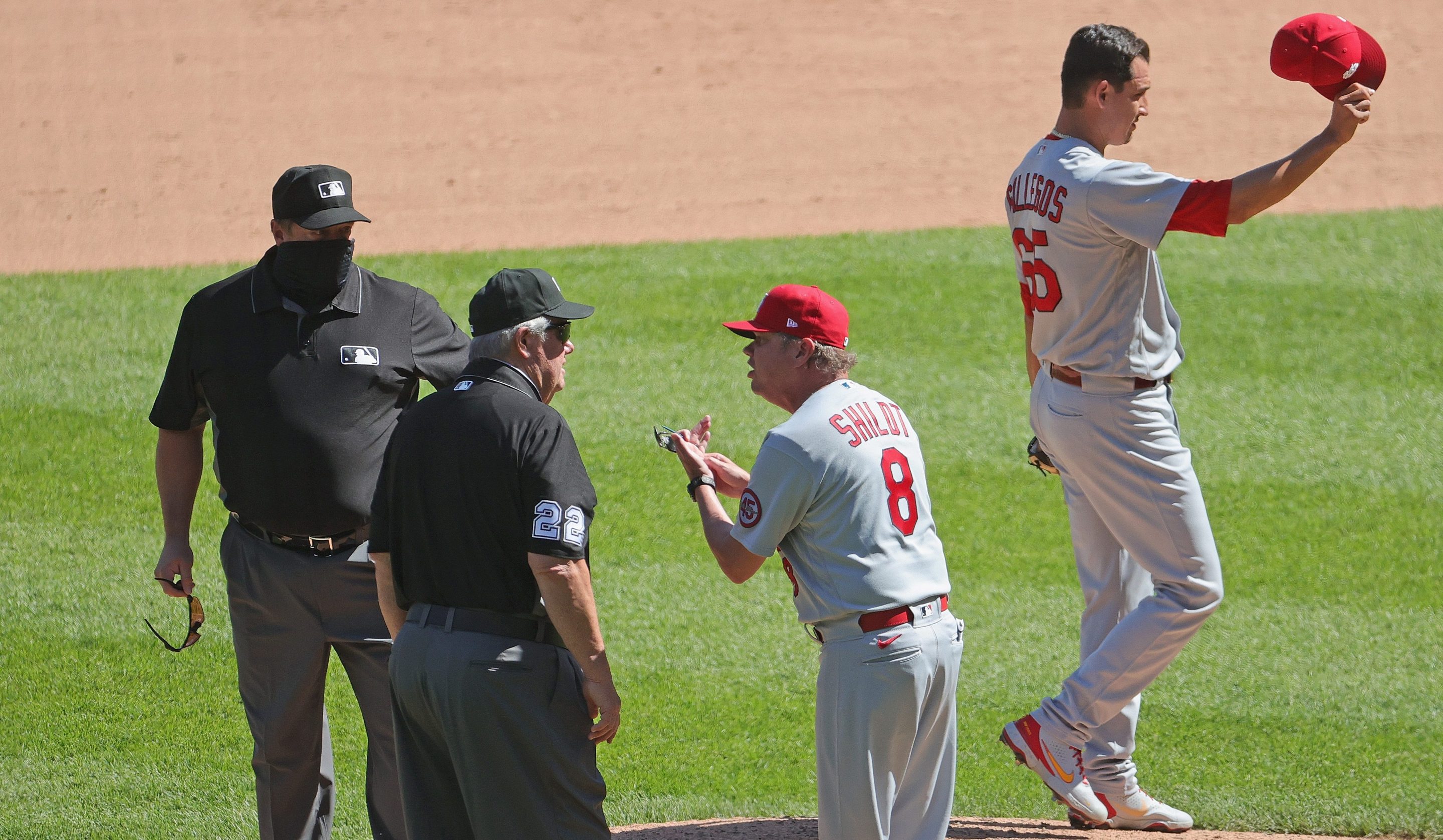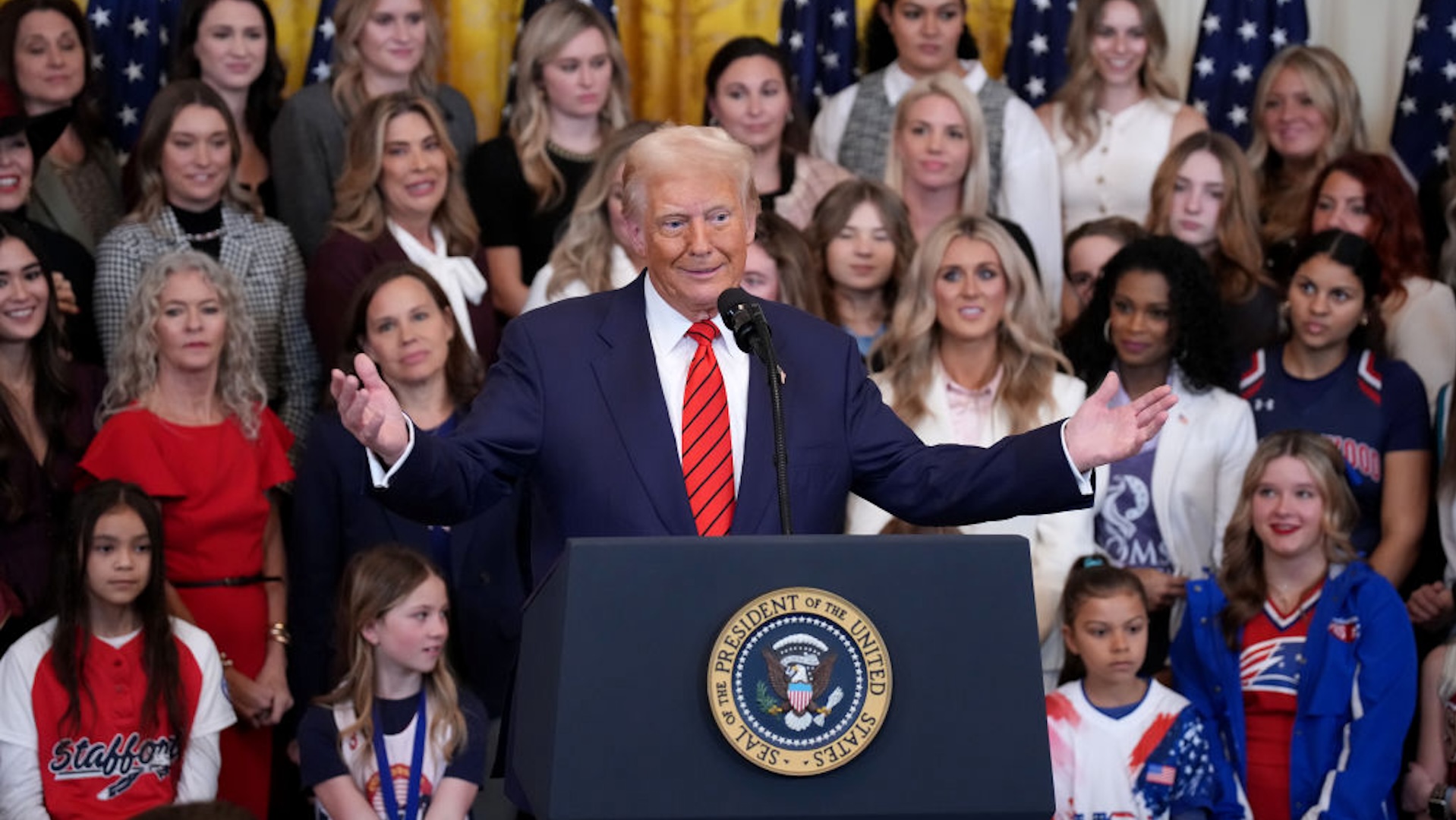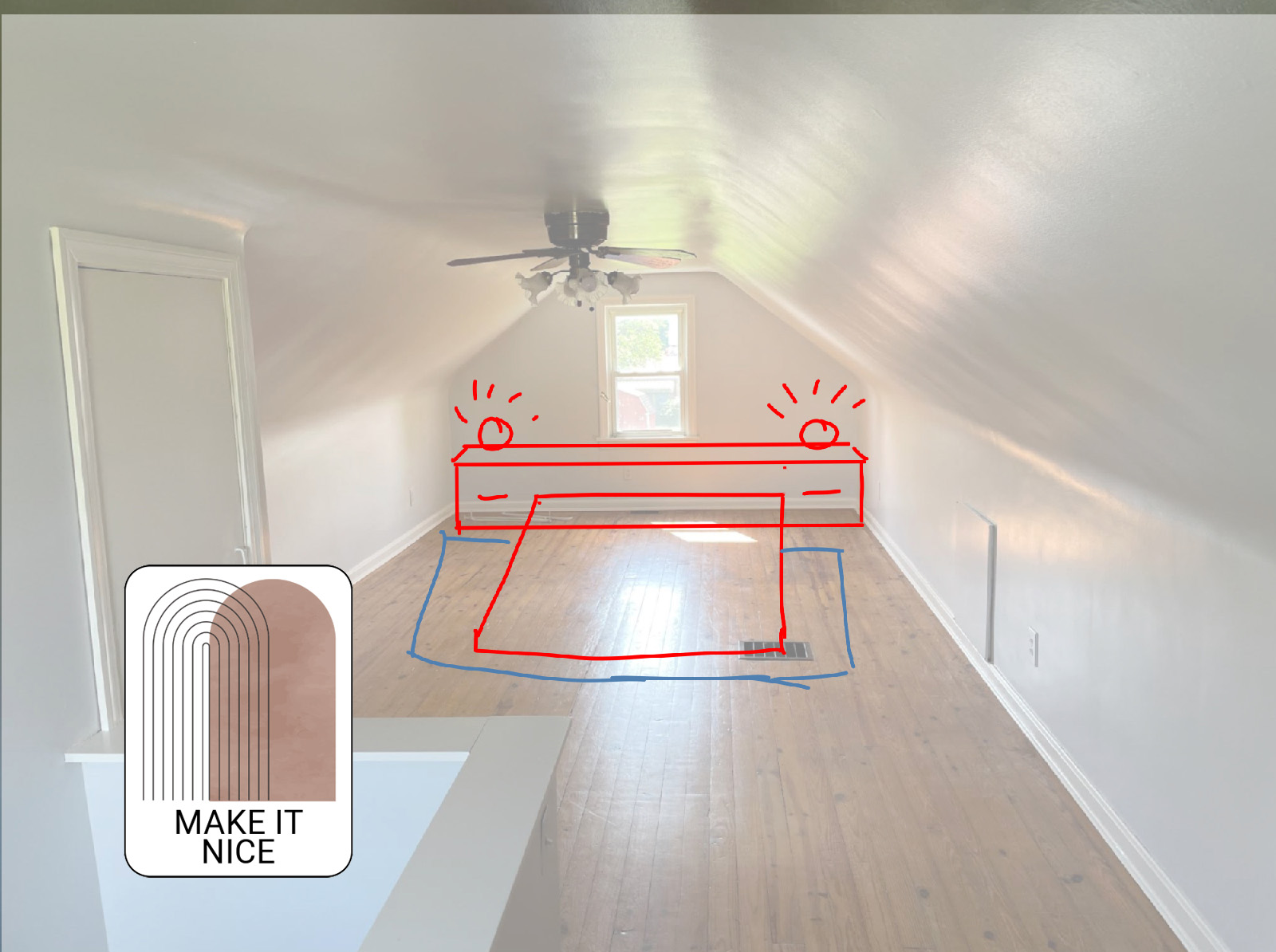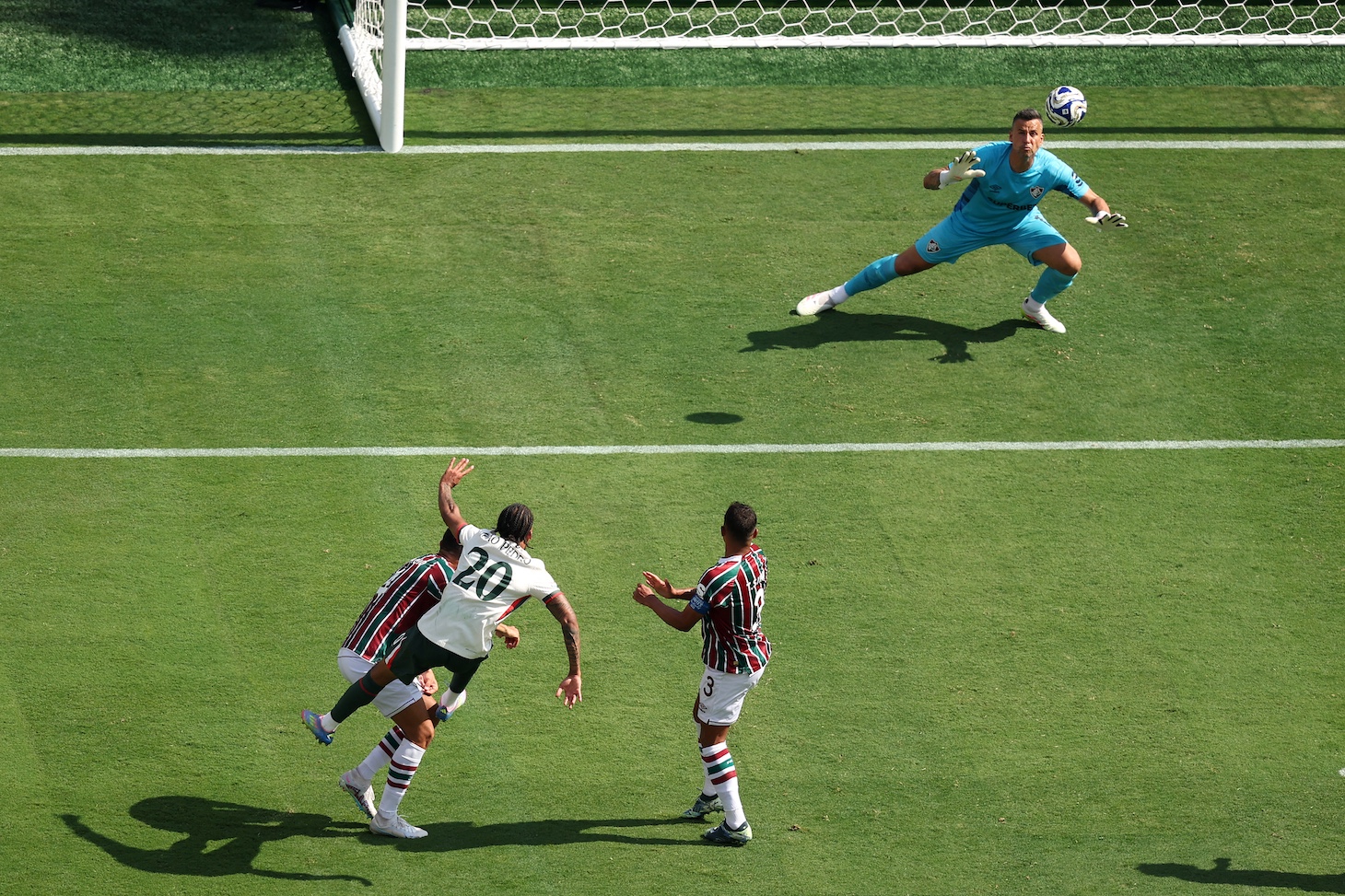A visible blob of the dreaded "foreign substance" caused a big scene on the mound during Wednesday's Cardinals win over the Chicago White Sox. A hat was confiscated, an umpire was reamed, a manager was ejected, and once again the complexities of managing MLB's uncomfortable and annoyingly nuanced struggle with ball-doctoring were hauled out into public view.
Cardinals reliever Giovanny Gallegos was brought on with two runners on and one out in the bottom of the seventh inning, to face José Abreu. Umpire Dan Bellino, working second base, spotted a slick spot on the brim of Gallegos's hat during warmups, and notified crew chief Joe West. MLB rules allow an umpire to immediately eject a player found to be doctoring baseballs; such a player would face an automatic 10-game suspension. The league is trying to crack down on the timeless and widely practiced art of applying tacky substances to baseballs in order to improve pitching performance, or at least it wants to give off the appearance of cracking down. Back in March, MLB distributed a memo alerting teams that new strategies, including Statcast monitoring of spin rates and "Gameday Compliance Monitors," would be used to identify cheaters. Gallegos, having been spotted by an umpire while on the mound with gunk on the brim of his cap, could've been in deep shit.
That's not how it worked out. West, who for all his many, many spectacular failures as MLB's longest tenured umpire is at least entrenched enough in baseball culture to know which rules he should treat with an eye-roll, decided the appropriate course of action in this case was simply to remove the hat from the game, thereby nipping at the outset any possible appearance of unfairly boosted performance. Cardinals manager Mike Shildt looked out from the dugout to see umpires congregating around his pitcher, wondered what the hell was worth disrupting his guy's warmup routine ahead of an important at-bat, and marched out there to find out. Things went south from there.
Joe West tells Cardinals pitcher Giovanny Gallegos to change his hat because he noticed a foreign substance then he ejects manager Mike Shildt for arguing pic.twitter.com/sBdrorzEIY
— Jomboy Media (@JomboyMedia) May 26, 2021
Gallegos, sans the offending hat, struck out Abreu and Yermín Mercedes on 10 pitches to finish the inning, and the Cardinals cruised from there to a 4-0 victory. Shildt, who so far could be accurately accused of mounting a hell-or-high-water defense of his pitcher's right to wear a hat with a suspicious foreign substance conspicuously slicked along a popular spot among ball doctors, spoke at length after the game. This is a 10-minute video, but Shildt is very good and I urge you to watch the entire thing:
Mike Shildt sounds off on Giovanny Gallegos' hat being confiscated: "You want to police some sunscreen and rosin? Go ahead. Get every single person in this league. ... Why don't you start with the guys that are cheating with some stuff that's really impacting the game?" pic.twitter.com/02RetNKwQZ
— Bally Sports Midwest (@BallySportsMW) May 26, 2021
Shildt's case ultimately is that there's a distinction between the stuff pitchers use in order to be able to grip the ball and throw it accurately over the plate—which is what MLB wants, both for quality of play and to protect the safety of batters—and "concocted substances" pitchers use in order to produce "wiffle-ball stuff" that gives them a massive competitive advantage. He's not wrong about that, and he's not wrong that MLB has given itself an almost impossible chore by setting out to police ball-doctoring without producing negative baseball outcomes like an uptick in hit batters, negative publicity, or career consequences for pitchers who are doing relatively benign shit that's been part of the game for more than a century. At one point in his remarks Shildt does everything but call out Dodgers pitcher Trevor Bauer by name:
"There are people that are effectively—and not even trying to hide it, essentially flipping the bird at the league, with how they're cheating at this game with concocted substances ... How about the guys that are pitching their tails off in Major League Baseball, and doing it clean, and there's a competitive advantage for the guys that are clearly loading up with concoctions that they actually advertise, don't do anything to hide, even in plain view ... You can see, based on spin rates, how guys' careers are jumping off the charts. And then you can do cause-and-effect."
Shildt's broad point—that ball-doctoring is a tough, complex problem, that addressing it effectively will be a real puzzle, and that it should probably not fall to umpires to determine mid-game—is a good one, and gets at why this is so tough a nut to crack. Pitchers gripping the ball well and not spraying sliders into the necks of every fifth batter is good. Pitchers having such command of the ball that every team now has at least half-a-dozen guys who can locate 95-mph sinkers, and strikeout rates spike to hideous, unprecedented levels, is bad. Passing through a surge of walks and hit batsmen and a mini-era of aesthetically depressing and hilariously un-telegenic baseball in order to realign pitching dynamics, without any certainty that the baseball on the other side would be worth the effort, could also be real bad! Baseball is a sport run by morons, but even if it weren't, there would be no obvious answers.
Bellino noted a foreign substance. West, who could've bounced Gallegos from the game, opted to bounce the hat, which seems eminently reasonable. Shildt, who has some informed and correct observations about the immediate challenge facing the sport and where his player fits into all that, feels that this was an example of umpires involving themselves where they should not. And Gallegos obviously did not need Bauer's mystery gloop in order to fan two talented hitters in a clutch situation. West said after the game that the "whole point of this is we're trying to protect [Shildt's] pitcher" from the perception that he might be "cheating or any of that stuff." Shildt reiterated later Wednesday night that "having to police foreign substances, candidly, shouldn't have to be part of [umpires'] jobs." This whole episode falls into the category of conflicts MLB has created by having a whole system of formally unacknowledged customs that lend at least as much shape and substance to the game as anything found in its official rulebook.
Aside from all that, though, it is very funny to hear Shildt say that his player's greasy hat got that way because the guy "at some point in his career" used sunscreen in order to protect against "some kind of melanoma." Yes, definitely.







